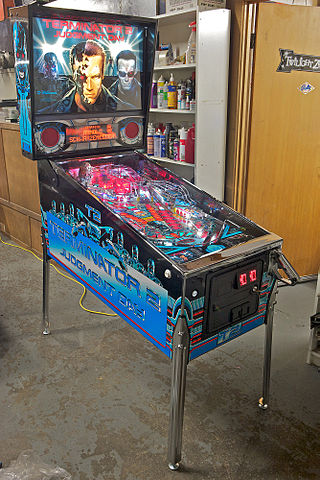
Pinball games are a family of games in which a ball is propelled into a specially designed table where it bounces off various obstacles, scoring points either en route or when it comes to rest. Historically the board was studded with nails called 'pins' and had hollows or pockets which scored points if the ball came to rest in them. Today, pinball is most commonly an arcade game in which the ball is fired into a specially designed cabinet known as a pinball machine, hitting various lights, bumpers, ramps, and other targets depending on its design. The game's object is generally to score as many points as possible by hitting these targets and making various shots with flippers before the ball is lost. Most pinball machines use one ball per turn, and the game ends when the ball(s) from the last turn are lost. The biggest pinball machine manufacturers historically include Bally Manufacturing, Gottlieb, Williams Electronics and Stern Pinball.
A glossary of terms, commonly used in discussing pinball machines.

Pin-Bot is a pinball machine released by Williams in October 1986. It was designed by Python Anghelo and Barry Oursler.
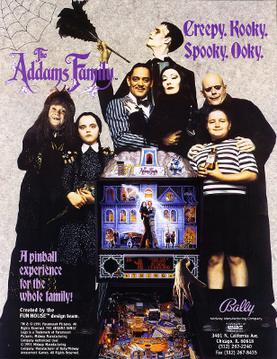
The Addams Family is a pinball machine released in March 1992. It was designed by Pat Lawlor and Larry DeMar and released by Midway. It was based on the 1991 film of the same name, and features custom speech by the stars of the film, Anjelica Huston and Raul Julia. It is the best-selling solid state pinball machine of all time with 20,270 units sold.

Star Trek: The Next Generation is a widebody pinball game, designed by Steve Ritchie and released in November 1993 by Williams Electronics. It was part of WMS' SuperPin series, and was based on the TV series. It is the only pinball machine that features three separate highscore-lists. Apart from the regular highscore-list and the buy-in-list, it also features a reminiscence to The Machine: Bride of Pin*Bot billionaires club. It is also the third pinball game overall based on the Star Trek franchise, following the 1979 pinball game by Bally, and the 1991 game by Data East, and preceding the 2013 pinball game by Stern.
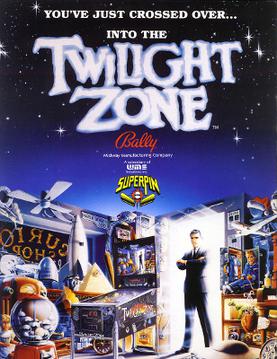
Twilight Zone is a widebody pinball machine, designed by Pat Lawlor and based on the TV series of the same name. It was first released in 1993 by Midway. This game is part of WMS' SuperPin line of widebody games alongside Star Trek: The Next Generation and Indiana Jones: The Pinball Adventure.

Cirqus Voltaire is a 1997 pinball game, designed by John Popadiuk and released by Williams Electronics Games. The theme involves the player performing many different marvels in order to join the circus. Some of the game's distinctive features include a neon light running along the right-hand ramp, a pop bumper that rises up from the middle of the playfield at certain times, and a magnet at the top of the left ramp that can catch balls and divert them into the locks. The most notable feature is the Ringmaster, a head that rises at certain times and taunts the player.

Attack from Mars is a 1995 pinball game designed by Brian Eddy, and released by Midway.

The Getaway: High Speed II is a 1992 pinball game by Steve Ritchie. It is a sequel to 1986's High Speed.
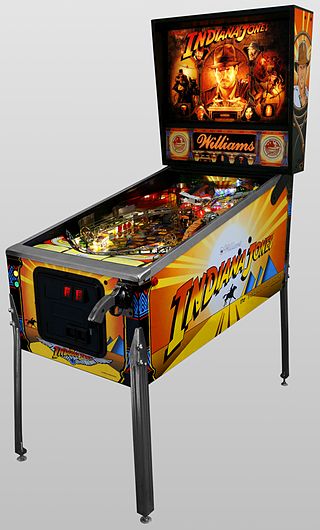
Indiana Jones: The Pinball Adventure is a 1993 widebody pinball game designed by Mark Ritchie and released by Williams. It was based on the Indiana Jones movies. It was also part of WMS' SuperPin series of widebody games.
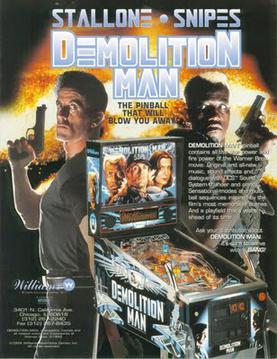
Demolition Man is a Williams pinball machine released in February 1994. It is based on the motion picture of the same name. It is part of WMS' SuperPin line of widebody games.

The Flintstones is a pinball game released by Williams in 1994 and based on the movie of the same name which is based on 1960–1966 animated television series of the same name. This machine is not to be confused with another pinball machine, a redemption game, based on the TV series and also released in 1994, manufactured by Innovative Concepts in Entertainment (ICE).
Doctor Who is a pinball machine designed by Bill Pfutzenreuter (Pfutz) and Barry Oursler, and released by Midway in September 1992. It is based on the television series Doctor Who. As stated in the Gameplay section, the rulesheet is rather different from other pinball machines released at the time, which didn't help popularity as casual players did not understand the complex rule changes that occur during the game.

Checkpoint is a 1991 pinball machine released by Data East. It featured the first dot matrix display (DMD) ever incorporated into a pinball game. For Checkpoint, Data East used a "half-height" DMD. By way of comparison, Williams later produced machines with standard DMDs that were twice the height. Checkpoint also features video mode minigames on its display.
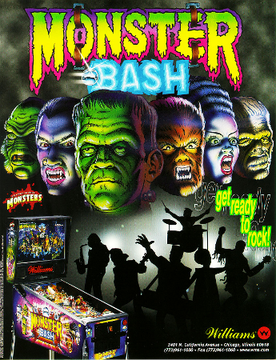
Monster Bash is a pinball machine produced by Williams. The game features some Universal Monsters including The Creature from the Black Lagoon, The Wolf Man, Frankenstein's monster, the Bride of Frankenstein, Dracula and The Mummy.

Creature from the Black Lagoon is a pinball machine designed by John Trudeau and released by Midway. It is loosely based on the movie of the same name. The game's theme is 1950s drive-in theater. The pinball game was licensed from Universal Studios by Bally so that all backglass and cabinet artwork and creature depictions would resemble those of the original movie.
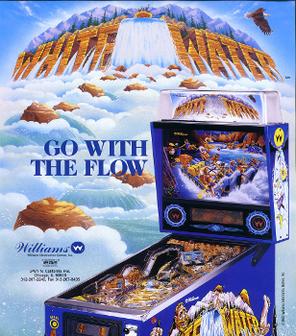
White Water is a 1993 pinball game designed by Dennis Nordman and released by Williams. The theme is based on white water rafting, which is reflected in the game's 'wild' ramps and very fast game-play.

The Machine: Bride of Pin-Bot is a 1991 pinball game designed by Python Anghelo and John Trudeau, and released by Williams. It is the second game in the Pin-Bot series, and is the last game produced by Williams to use a segmented score display rather than a dot-matrix screen. It is also one of the few pinball games produced that uses a variable-brightness segmented display.

Who Dunnit is a Midway pinball machine with a 1940s style and a murder mystery theme. The playfield features up to five different murder mysteries by revealing clues by sending the ball to an elevator, phone, or slot machine. The machine accepts up to four players, and features four-ball play.

Hurricane is a pinball machine released by Williams Electronics in August 1991. It was designed by Barry Oursler as the third game in Oursler's amusement park themed pinball trilogy. The first being Comet, released in 1985, and the second being Cyclone, released in 1988.


















